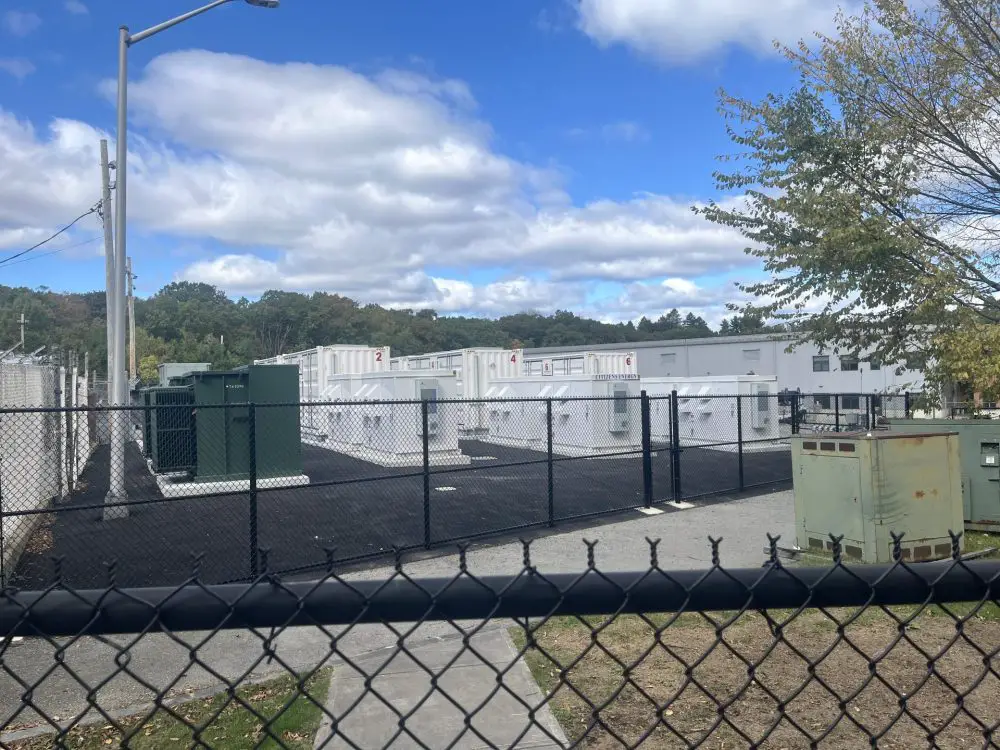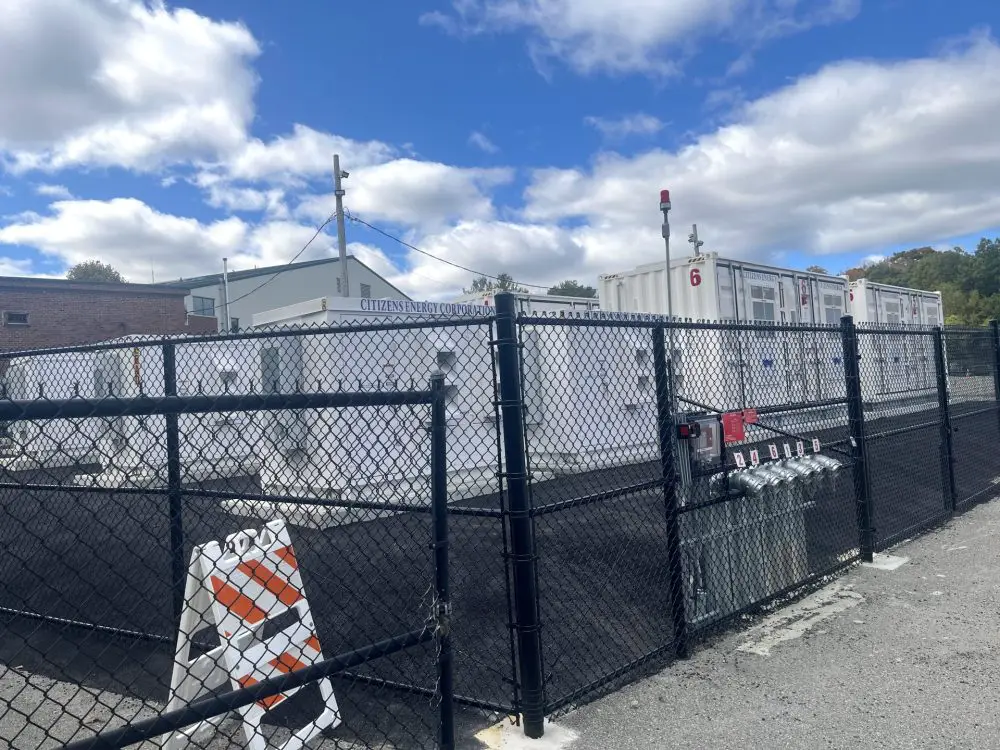Wellesley MLP to celebrate giant battery storage system
When the Wellesley Municipal Light Plant Board’s Paul Criswell shared a presentation on the MLP’s planned battery energy storage system at last year’s Annual Town Meeting, he pranked members that the setup was going to look like… a giant pink Energizer bunny. But we’re here to tell you about and show you what the system actually looks like now that it’s in place: A tidy bunch of white and grayish containers behind a chain-link fence.

The BESS, short for battery energy storage system, is slated to get an official ribbon-cutting ceremony this Wednesday (though there was a possibility of a delay on the festivities due to circumstances unrelated to the batteries). The setup includes a six-pack of lithium ion battery storage systems and complementary inverters to convert DC to AC power.
We spoke with MLP Assistant Director Chris Chan to find out what the fuss over the BESS is all about, in case you missed that Town Meeting presentation or are new to town.

Wellesley has partnered with an outfit called Citizens Energy Corp., that is footing the upfront bill for the BESS and its operations. The gear is now located on nearly 4 acres of MLP property on Municipal Way (off Rte. 9 west) adjacent to its main building. The space had been used for parking and storage.
BESS is a nearly 5 megawatt system designed to help reduce the town’s peak electricity usage—a calculation that the operator of New England’s electrical grid uses to determine its capacity charge to customers like the town of Wellesley. The idea is that Wellesley would rely on battery power during the hottest of hottest periods of summer to reduce its use of the grid during that time, and thus lessen the amount it will be charged by ISO New England.
The system is expected to save the MLP $8 million over 20 years, and that could pay off for customers. As for Citizens Energy, it would split the savings with the town (the $8M figure for Wellesley comes after that split was calculated).
“There aren’t too many light plants that have their own supersized battery storage system… it’s pretty monumental,” Chan says. “It was a non-trivial exercise that required a lot of engineering and planning.” The request for proposals for the project was issued in 2020.
Other battery storage systems in Massachusetts include one in Holyoke, and a new one in Holden.
Chan says using the energy stored in BESS during peak usage periods “very much aligns with the town’s Climate Action Plan as well.” This offers a clean form of energy, whereas the energy typically tapped from the grid during peak usage periods relies heavily on fossil fuels.
Another benefit of the BESS is that if the supply lines from Eversource to the town are ever down during a major outage that the stored battery energy could be used to power critical public service operations such as the MLP, Department of Public Works, and the Fire Department for at least a couple of days.
Construction on the BESS started late last year and the equipment is now in the commissioning stage, as Wellesley readies for it to go live.
MLP officials hope that the BESS might inspire customers, such as those with solar systems, to someday install their own battery storage systems to support both their own energy needs and perhaps those of others in the area.
